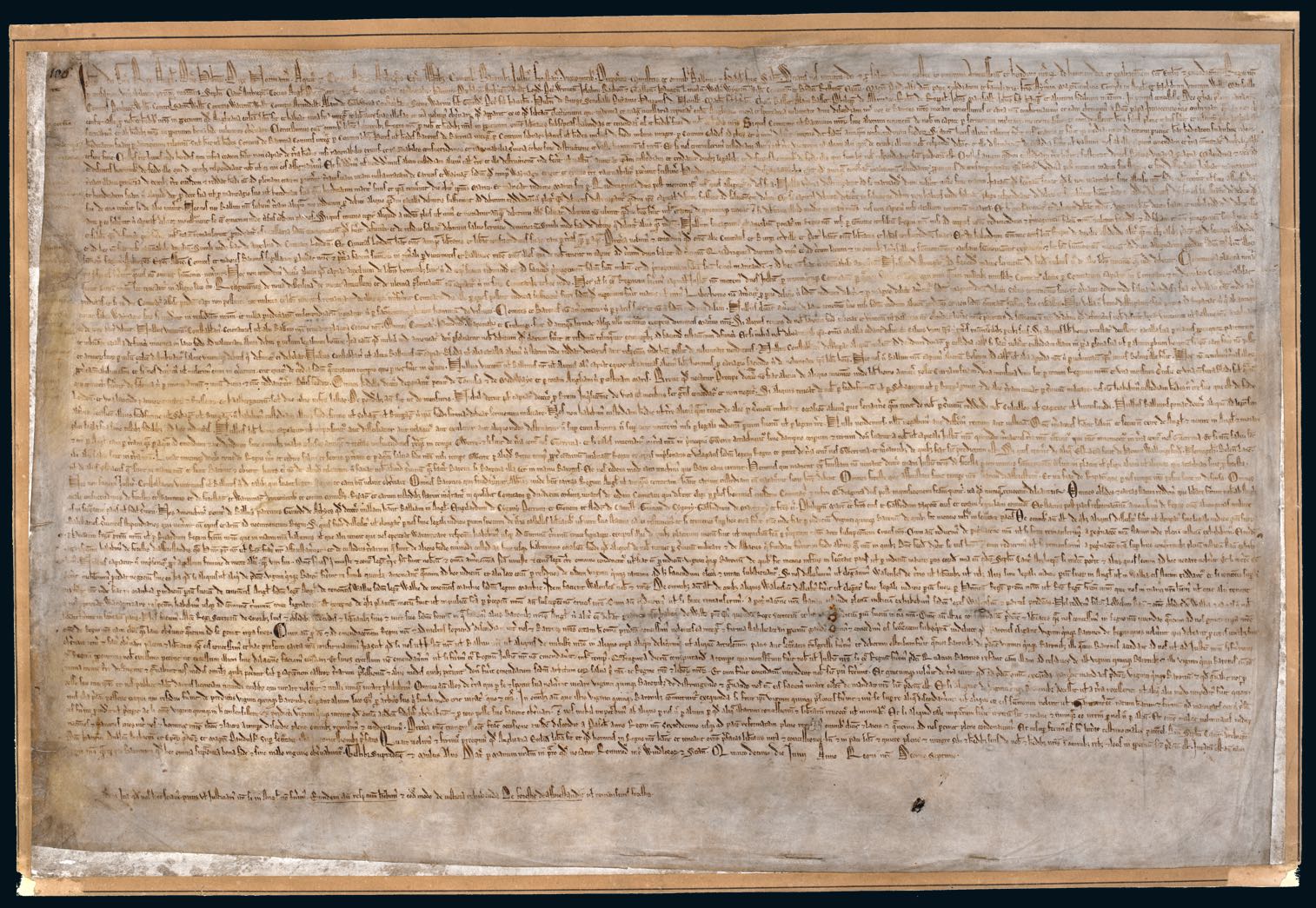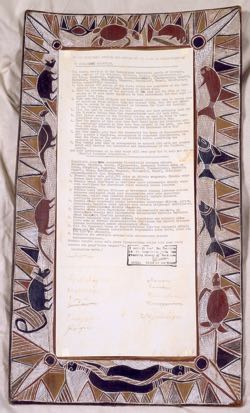and Modern Australia
- A
A new colony
British subjects denied British laws and liberties - B
Eureka, 1854
Miners fighting for their rights - C
Shearers’ strike, 1894
Who had Magna Carta on their side? - D
War Precautions Act 1914 –1915
How much freedom is appropriate in a time of war? - E
Communist Party Dissolution Act 1950
National security vs arbitrary government - F
Darryl Kerrigan
His home is his castle - G
Albert Langer fights democracy
With a little help from Magna Carta - H
Yirrkala bark petitions 1963
A Magna Carta for Indigenous Australians
Magna Carta is one of the most famous documents in the world. First written in 1215, it set out rules limiting the power of the monarchy and safeguarding basic human rights. Over its long history it has been reinterpreted as an icon of justice and liberty. Magna Carta is one of the historic foundations of Australian democracy. Its principles about the rule of law and good government remain relevant today.
Explore Magna Carta through its clauses or view the stories to discover how people have used this medieval document to shape modern Australia.
- A
A new colony
British subjects denied British laws and liberties - B
Eureka, 1854
Miners fighting for their rights - C
Shearers’ strike, 1894
Who had Magna Carta on their side? - D
War Precautions Act 1914 –1915
How much freedom is appropriate in a time of war? - E
Communist Party Dissolution Act 1950
National security vs arbitrary government - F
Darryl Kerrigan
His home is his castle - G
Albert Langer fights democracy
With a little help from Magna Carta - H
Yirrkala bark petitions 1963
A Magna Carta for Indigenous Australians

Yirrkala bark petitions 1963
These bark petitions are the Magna Carta for the Indigenous peoples of this land.Prime Minister Kevin Rudd, 2013
In 1963, Yolngu leaders from Yirrkala, on the Gove Peninsula in Arnhem Land, sent two petitions to the Australian Parliament. They asked the government to reconsider its decision to excise 300 km2 of Arnhem Land for bauxite mining. Work had started on the mine, without consultation with the Yolngu people.
The Yirrkala petitions combine painted bark panels and text typed in English and Gumatj. Like Magna Carta centuries before, they are a statement of grievance and an assertion of rights. Galarrwuy Yunupingu, whose father, Mungurrawuy, was one of the petitions’ painters and signatories, said they are ‘not just a series of pictures but represented the title to our country under law’. Bridging two legal traditions — those of the Yolgnu and the Westminster parliamentary system — the petitions were the first traditional Indigenous documents recognised by the Australian Parliament.
The petitions failed and the mine proceeded. But they did help advance the recognition of the sovereign title of Indigenous Australians. They led to the 1971 Gove Land Rights Case and the Aboriginal Land Rights (Northern Territory) Act of 1976. In 1992 the Mabo judgement overturned the ‘legal fiction’ of terra nullius.
Like Magna Carta, the Yirrkala petitions are founding documents setting down principles and inspiring actions for social justice. They are kept at Australian Parliament House, Canberra.


